In our previous article, I covered commonly desired features of any musical keyboard. In this article, I will cover different types of electronic keyboards. We will first take a look at
- The types of keyboards available and understanding of the principles associated with sound production in them.
- Application or type of functions each of them is best suited for.
Synthesizers
Synthesizer (synths for short) is a popular choice for beginners, desirous of entering the world of musical keyboards. The popular conception is that it is just an electronic keyboard, capable of producing different types of sounds, ranging from those of musical instruments to sound effects. Some even consider every keyboard to be a synthesizer. The fact is, that instruments with basic sound tweaking features do not constitute a synth.
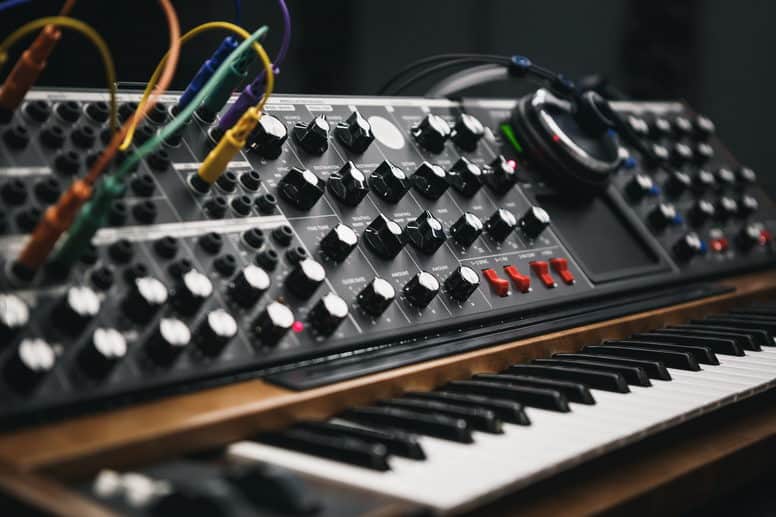
The ability of synths goes far beyond the imitation of the sound of basic acoustic and electromechanical instruments. It takes us to the world of generating new and fresh exciting sounds which an imaginative and creative mind can comprehend.
Four major technologies used for sound creation are Virtual Analog, Digital Synthesis, Sample – Playback, and Physical Modelling. Instruments use either or a combination of these technologies to produce sound.
Analog Synthesizers
Analog synths were first to be devised, by Robert Moog in the late 1960s, as a new way to make sounds by manipulating electrical signals. They immediately found their way into the world of pop, rock, and many other types of music.
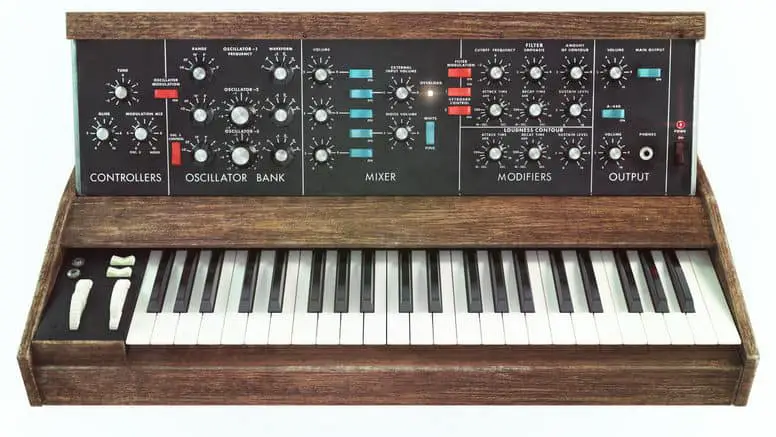
Any synthesizer has four basic building blocks – Voltage Controllable Oscillators (VCOs), Voltage Controllable Filters (VFOs), LFOs (Low-Frequency Oscillators), and ADSR (Attack, Decay, Sustain, Release) envelope. The oscillator produces a basic waveform while LFO modulates its frequency or volume to create Vibrato and Tremolo effects.
Filters are used to shape the tonal character of the sound by filtering low or high frequencies or resonating certain frequencies. ADSR envelope causes changes in the signal level, pitch, and other characteristics over time.
In analog synthesizers, the periodic fluctuation of voltage generated by the oscillator circuit mimics the vibrating string. The amplitude, frequency, speed, and shape of the voltage waveform can be altered by the synths control circuitry to alter the volume, pitch, tone, and timbre of the produced sound.
They usually have a warm sound with infinite resolution in sound as well as control, which means no limitation in sound due to sample rate and immediate tactile response from controls. They did not have any preset memory in absence of digital controls.
These very complex waveforms, full of harmonic content are then amplified and sent to the speakers to produce the desired sounds. Analog synthesizers are making their way back into the keyboard market due to their unique and characteristic sounds.
Digital Synthesizers
The use of Digital technology started around the late 1970s primarily to control analog circuits and led to many interesting developments like polyphony, preset memory, etc. This led to an immense rise of interest in digital technologies among the manufacturers who now began to dream of digital ways to create new types of sounds.
Digital keyboards and synthesizers began to come into prominence in the mid-1980s and have continued to evolve ever since.
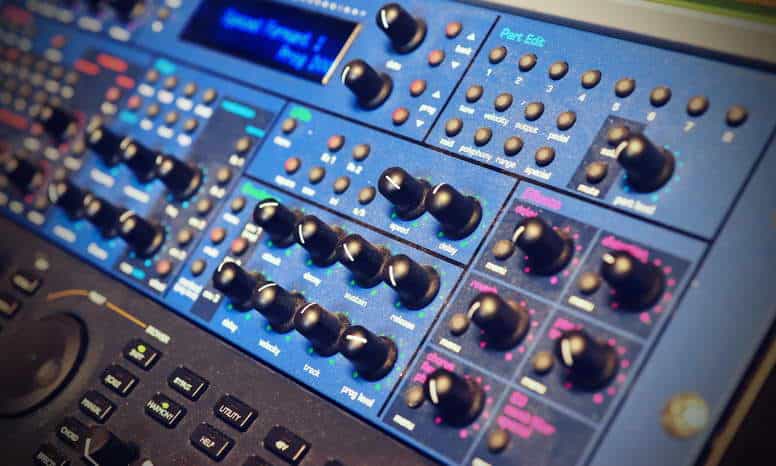
Like any other digital technology, the digital synths also generate a string of numbers. These numbers generated at a steady sampling rate are converted to analog signals and fed to speakers to produce sound. They can be considered as computers using Digital Signal Processing Techniques and codes in doing a dedicated task of creating music.
The type of sound produced depends on the complexity of the programs instead of the properties of physical components There are a variety of techniques for digital synthesis.
Some of the technologies used in digital synthesizer’s algorithms are Frequency Modulation (FM) and Key Scaling method to avoid distortion like in Yamaha DX7, Phase Distortion (PD) like in Casio’s CZ range, and Additive Synthesis used in Kawai’s K – Series. Some of the advantages of the digital synthesizers are:
- They can produce a very wide range of sounds in comparison to their analog counterparts.
- Use of preset memory.
- More affordable than analog synths.
- Very large form factors – which means small-sized instruments can also be very powerful.
Some of the digital synthesizers are designed to emulate the analog synthesizers due to their unique sounds while others may include sampling features.
Samplers
These types of synthesizers playback the digital recordings of analog or electric instruments. Kindly read the section on sample playback in our article on common features of keyboards.
These types of keyboards have a very large set of sounds ranging from piano, strings, and organs to digital recreations from the sounds of analog synths.
Virtual Analog (VA) Synthesizers
I had previously mentioned that Analog Synths are making their way back. However, most of them are in the form of Virtual Analog instruments, which are a subset of Digital Synthesizers.
The Virtual Analog Synths work in pretty much the same way as an analog synthesizer, except that the parts of the circuits like filters, ADSR, etc are replaced by the subroutines in the program. These subroutines, which are digital models of the actual components, must be executed at least once per note per sample period.
Hence, the more complex is the desired sound, the more is the number of notes required, which means the number of times a subroutine must be executed is also more. This requires more computing power or speed of the chips inside the instrument increasing its cost. A compromise can be reducing the sample rate but this has a huge impact on sound quality.
These instruments have polyphonic capabilities, preset memory, smaller size, and are much cheaper than analog synths. Some of the notable VA Synths are Mord Lead, Access Virus, Korg MS – 2000, Waldorf Q, Yamaha AN-1x, etc.
There are a few other types of synthesizers such as
- Hybrid Synthesizers
- Modular Synthesizers
- Semi-modular Synthesizers
- Software synthesizers or Soft Synths
We shall discuss these in our detailed article of how synthesizers work later.
Portable Keyboards
Portable Keyboards are primarily for beginners and may be classified as entry-level to marginally intermediate-level instruments. They include basic sounds and feature a lot of functions oriented towards easy learning to make beginners comfortable with their use and even have some fun. They were introduced to the markets in the 1980s by Yamaha and Casio.
Some of the basic requirements of any portable device are
- Suitability for battery operation, so that they can be operated even when the power source is not available, similar to a laptop.
- Lightweight construction so that it is easy to transfer them between places.
- In-built amplifiers and stereo speakers to produce adequate levels of sound by themselves.
- Rhythm accompaniment to help you play along. This leads to improvement in timing skills for beginners.
- Presence of at least basic effect processors such as echo and reverb.
- Availability of audio recording facility to record and listen to your performance.
- Presence of single-track or multi-track sequencers.
- USB connectivity to transfer sound to/from your keyboard. Internet Connectivity is an added benefit.
- MIDI compatibility.
- On-board music lessons to guide the beginners.
After starting with very basic features, current portable keyboards have a large number of features and present real value for money. They usually have 49 or 61 regular non-weighted synth keys, while 76 or 88 key versions are also available.
They produce sound by sample-playback method and in spite of comparatively smaller memory, usually offer 400 to 800 instrument-related and general-purpose sounds.
Keyboard Workstations
A keyboard workstation is an “all-in-one” machine that combines the functions of sound creation, composing, live performance, and production studio. They have all the tools for both composers and musicians. The workstation is the most advanced and high-end instrument of all the electronic keyboards with more sounds, effects, and music creation tools than any other keyboard.
Workstations were launched in the late 1970s as a combination of synthesizers and sequencers in one device. A workstation can always work like a synthesizer but a synthesizer may not always be able to work as a workstation if it does not have an onboard sequencer or recording functions.
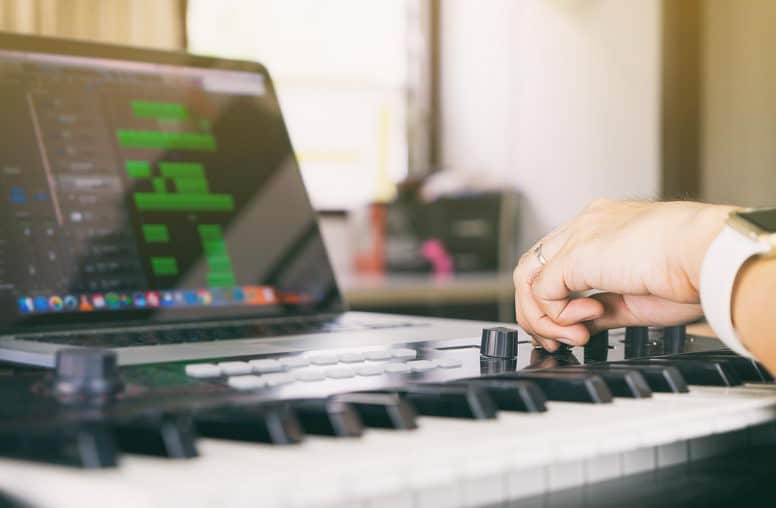
The advancement in workstations has closely followed the development in microprocessors, memory, and personal computing technologies. Some of the key functions and features of workstations are:
1. Synthesis Technology
The workstations deploy analog modeling, sample playback, and even full sampling functionality as methods of sound generation. The very high-end workstations make use of multiple synth engines. Their powerful control features facilitate easy to design and crafting of hundreds of presets into the desired sounds. They have the ability to generate a large number of sounds simultaneously.
2. Recording and Sequencing
They have a plethora of recording and editing features with storage devices like multitrack recording, inbuilt CD writers, and an internal hard drive. While selecting a workstation, ensure that it has enough polyphony. This is particularly essential in multitrack recording as the notes on track are reduced from the workstations polyphony. Some of the advanced workstations even deploy 16-track sequencers.
Recorded sound or imported audio files can be assigned to trigger pads for playback. These trigger pads act as hotkeys. This is like an extended recording and playback. This function is particularly popular with Hip Hop and Rhythm & Blues (R & B) producers as it allows them to handle quick beats and loops
3. Sounds
The number of sound sets in the library of a workstation is comparable to very top-end synthesizers. These enormous libraries go a long way in making the workstations, an instrument of choice, for recording and composing. The libraries usually contain sounds of many instruments like guitars, drums, strings, pianos, bass, organs, etc capable of working as an orchestra.
You could layer these sounds to give a feel of a live performance. This unique combination sound is difficult to achieve through any other keyboard type. Many musicians buy a workstation for the sound collection and sound features only. The workstation is usually the best-in-class model for any manufacturer.
4. Effects & their Processing
Effects play a pivotal role in giving an overall shape to any track. The collection of sound signals just constitutes a basic track. Salt and spices are provided by the audio effects to give the track its unique and distinct taste.
All the workstations have separate onboard effects processors. The effects can be applied to the total mix or to the individual tracks. In the first case, they are known as master effects and in the latter case as the insert effects. Most of the workstations include tools used in sound shaping such as EQ and dynamic processing.
5. Number of Keys
Workstations are commonly preferred with either 61-keys with synth action or 88-keys with weighted action. Higher-end models may offer Aftertouch to control vibrato, volume, or other parameters. 73 or 76 versions are available but are less common.
6. Computer / MIDI / Audio Connectivity
Most of the computers / MIDI recording systems have the capabilities to far outclass the workstations. Workstations are useful for composers, producers, and performers as “all-in-one machines”. So it gets preference as a dedicated recording system that is easier and more intuitive to use and carry around.
If you use both workstation and computer recording software, you will need to sync your workstation with the computer. Most workstations have USB and/or MIDI connections. Some even have an mLAN interface to transfer audio data between your devices through a FireWire cable. The workstation may even have dedicated audio inputs to directly record the instruments.
Some workstations might include samplers, which allow them to import and experiment with any digitized sound.
To summarize, a workstation is an all-purpose instrument, but its capabilities are best utilized by experienced players and are not recommended as your first keyboard if you are a beginner.
Arranger Keyboards
The arranger is a professional keyboard, in portable keyboard style, but with professional sound engines having a wide variety of sounds, an auto-accompaniment system, and many tools to enhance the songwriting and composition process. Arrangers are available for all skill levels – beginner, intermediate and advanced.
They have become a necessary tool for all the musicians performing live as a one-man-band. Gradually, they are making their way from stages into the studios. Some of the advanced features that are particularly helpful in live performance are mic input, vocal effects, and on-screen lyrics display.
Auto-accompaniment
The auto-accompaniment system can play a few simple select chords or replicate the sounds of a full band. The arranger is sometimes referred to as a band-in-a-box, as they carry all the sounds and sequencing tools to create a complete song.
Auto-accompaniment consists of multi-part MIDI riffs ranging from basic drum beats to sounds of a full backing band. These riffs track the changes in chord, style, tempo, and rhythm of your playing and follow it. The feature gets triggered by chord changes in the music being played by your left hand towards the lower end.
This feature can range from a very basic one in arrangers costing a few hundred dollars to very high-end songwriting and performance machine worth several thousand dollars that can virtually do anything.
The concept of auto-accompaniment started with home and theatre organs in the early 1960s and got included in the digital keyboards around the early 1980s.
Differences with Portables and Workstations.
The major difference with the portables is in the quality of the sounds, additional pro features, overall build quality, and onboard speakers. Arranger keyboards mostly rely on the sample-playback methods to produce sounds. However, some form of organ modeling is used in many of the instruments.
The major difference with any workstation lies in the availability of the auto-accompaniment feature. If a workstation is considered a studio, an arranger is a band and a songwriting partner. The spectrum of available sounds in workstations is much broader than those in arranger keyboards.
The selection in an arranger is mostly focused on the sounds you would want to have in a live band scenario. They have a very wide range of backing accompaniments to suit any style, genre, or brand of music. An Arranger keyboard can be a great tool if you want to learn the patterns and sounds of different genres of music. You can even work backward to have a full hang of any genre’s elements.
MIDI Controller Keyboards
MIDI specifications were basically developed to allow control of sound from multiple synthesizers and samplers from a single keyboard. This gave birth to the concept of sound modules. The connected sound modules (also known as sound sources) may not necessarily have keys on them.
On the other hand, the controller keyboards do not have any sound engine or speakers inside them. Hence, they cannot produce any sound on their own. They simply transmit the MIDI data through USB or 5-pin MIDI connectors to the external sound modules which may be in the form of synthesizer keyboards, computer software synths, software, or hardware sequencers. One such link using a single MIDI cable can transmit 16 channels of information. Each channel can be used to communicate with or control a separate sound module.
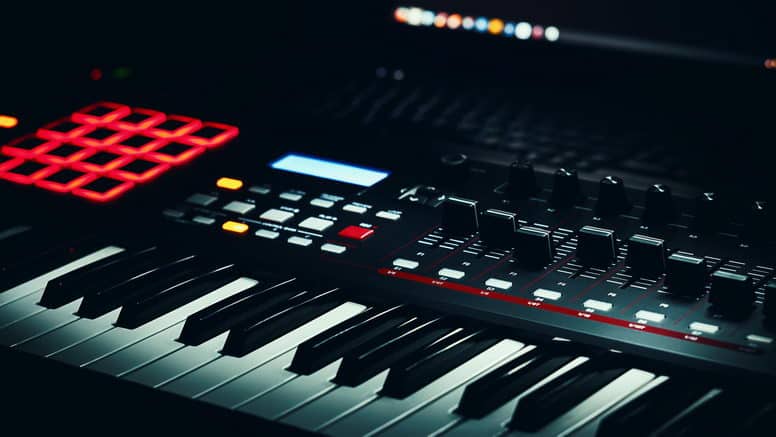
Today, sound designers, live performers, studio musicians, and songwriters make extensive use of these keyboards.
These are basically devices with synth-style keys, knobs, buttons, sliders, effects, modulation wheels, and other sensors. With these components, you can control filter cut-off, resonance, amp envelope, and many other parameters of the synth connected to your controller. In some advanced controllers, it may be possible to map the particular knobs or faders to a specific software application.
These controllers generate and transmit MIDI data containing sound and control parameters like note, pitch, velocity, key or button presses, slider changes, the knob turns, clock signals, etc to MIDI-compatible devices. These signals then trigger musical sounds on the instruments. They may even be used to control stage lights, audio mixers, and guitar effects units. Modern keyboards have touch-sensitive visual displays to allow easy use and control.
Controllers commonly have 25, 49, 61, or 88 keys. If you can play two-handed and have good control, you can go for 88 keys. But, you will be sacrificing the portability feature. Controllers with less number of keys generally have Octave Selection Switch allowing you to select the range you are currently playing. However, if you are using mapped keys to trigger different sound sources, you would most certainly like to have more keys.
If you want a MIDI controller to play percussion instruments, you most likely need velocity-sensitive performance pads. These are used for laying down beats or launching loops. But, they will consume a lot of your precious keyboard real estate. You can make use of a separate pad controller if you want.
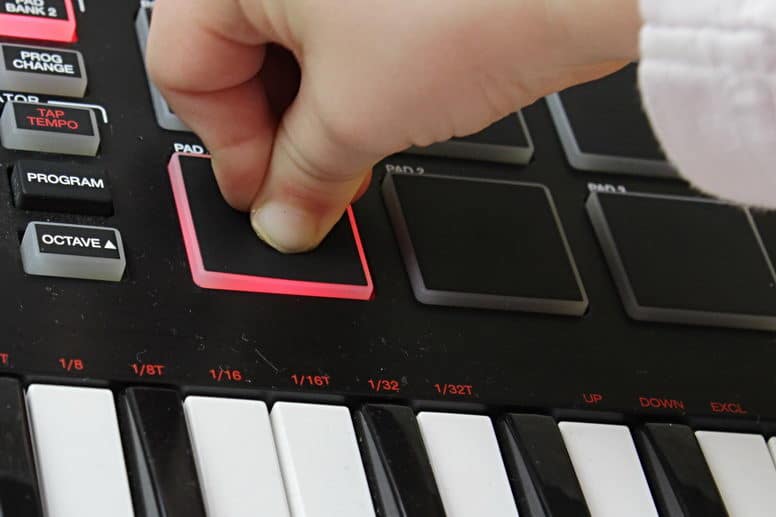
Some of the other important considerations while selecting a controller keyboard are
- Weighted, semi-weighted, or synth-action type keys
- Requirement of Aftertouch feature.
- How many faders, buttons, and knobs are needed.
- Types of I/O’s – MIDI, USB, iOS, or CV/Gate.
- Generic Inputs for third-party pedals.
- Need for performance pads and their numbers.
MIDI Control Surfaces
While selecting a MIDI controller, the first pertinent question is “What items will you be controlling”. This is essential to decide what features and control functions you will need. If you need it mainly to control the synthesizers, you will definitely need a keyboard-type controller with the keyboard action of your choice.
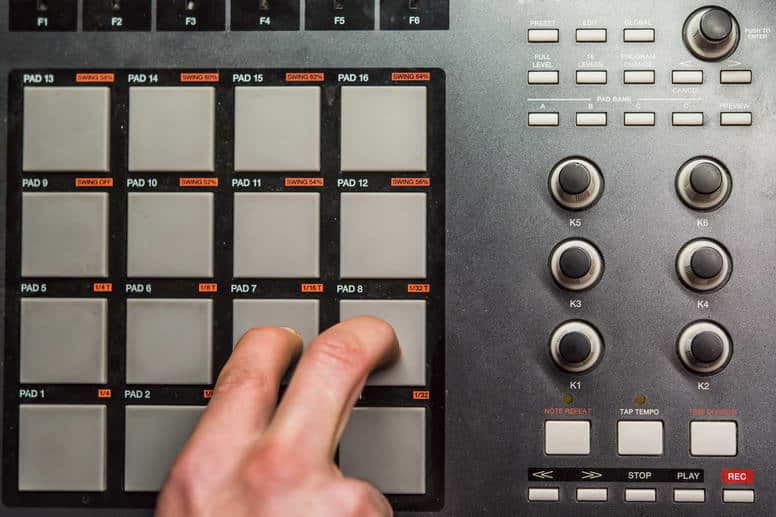
If you are not very comfortable with keyboards or want mobile solutions, you may choose MIDI pads. The various choices include drum pads, wind controllers (for instruments like saxophones), control surfaces, and combination controllers with ergonomic designs of keys, sliders, and knobs. They provide a convenient way to control your apps based on iOS or Android platforms.
Electronic Organs
In the past, Churches and the backstage area of the Concert halls invariably had huge pipe organs to lead and support the voices in hymns, songs, and chants. It produced its sounds by moving the air supply through specifically designed pipes for the purpose. These pipes were connected to the keyboard, one pipe per key. However, the entire system was very expensive and almost an investment.
Electronic Organs try to model and replicate the tones produced by these sounding pipes. This is done by a digital sampling process involving the digital reproduction of waveforms of the pipe’s sound. While it may not be a very true replica, it offers the benefits of low initial cost & space requirements, and easy portability. With ever-advancing technology, the difference in the subtlety of two sounds is decreasing by the day.
Digital organs include pitch bends, effects, modulation wheels, MIDI capability, and many other features.
